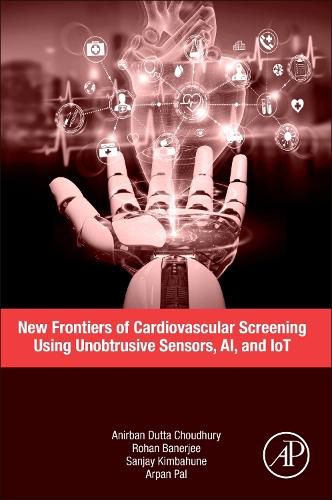Readings Newsletter
Become a Readings Member to make your shopping experience even easier.
Sign in or sign up for free!
You’re not far away from qualifying for FREE standard shipping within Australia
You’ve qualified for FREE standard shipping within Australia
The cart is loading…






New Frontiers of Cardiovascular Screening using Unobtrusive Sensors, AI, and IoT provides insights into real-world problems in cardiovascular disease screening that can be addressed via AI, IoT and wearable based sensing. Non-Communicable Diseases (NCD) are surpassing CDS and emerging as the foremost cause of death. Hence, early screening of CVDs using wearable and other similar sensors is an extremely important global problem to solve. The digital health field is constantly changing, and this book provides a review of recent technology developments, offering unique coverage of processing time series physiological sensor data.
The authors have developed this book with graduate and post graduate students in mind, making sure they provide an accessible entry point into the field. This book is particularly useful for engineers and computer scientists who want to build technologies that work in real world scenarios as it provides a practitioner’s view/insights /tricks of the trade. Finally, this book helps researchers working on this important problem to quickly ramp up their knowledge and research to the state-of-the-art.
$9.00 standard shipping within Australia
FREE standard shipping within Australia for orders over $100.00
Express & International shipping calculated at checkout
New Frontiers of Cardiovascular Screening using Unobtrusive Sensors, AI, and IoT provides insights into real-world problems in cardiovascular disease screening that can be addressed via AI, IoT and wearable based sensing. Non-Communicable Diseases (NCD) are surpassing CDS and emerging as the foremost cause of death. Hence, early screening of CVDs using wearable and other similar sensors is an extremely important global problem to solve. The digital health field is constantly changing, and this book provides a review of recent technology developments, offering unique coverage of processing time series physiological sensor data.
The authors have developed this book with graduate and post graduate students in mind, making sure they provide an accessible entry point into the field. This book is particularly useful for engineers and computer scientists who want to build technologies that work in real world scenarios as it provides a practitioner’s view/insights /tricks of the trade. Finally, this book helps researchers working on this important problem to quickly ramp up their knowledge and research to the state-of-the-art.